Baba Yaga : The Slavic Witch
Listen
At a glance
| Description | |
|---|---|
| Origin | Slavic Mythology |
| Classification | Ghosts |
| Family Members | N/A |
| Region | Poland, Russia |
| Associated With | Sorcery, Witchcraft, Abduction |
Baba Yaga
Introduction
In Slavic folklore, Baba Yaga is a creature who lives in a forest hut with three or four sisters. She is known for stealing, cooking, and eating people, usually children. Her fence is made of human skulls, and she can ride through air through an iron kettle or a mortar, which creates intense heat as she goes. On Death’s travels, she often accompanies him, and she feasts on souls that have just been released.
Although her name is often associated with the Grandmother Witch, there is no consensus on its meaning. She was first mentioned in a book about Russian grammar in 1755, and it is believed that she was already present in Slavic oral tradition before the age of modern technology. Although she is usually regarded as the villain of the piece, she can also be helpful and is sometimes seen as a trickster.
She is most famous for her role in Vasilissa the Beautiful, where she inadvertently freed the heroine from her stepisters and stepmother’s tyranny. She also appears in other notable works, including The Frog Princess and The Kind-Hearted Lady. Some of her stories follow the Cinderella story’s concept, with Baba Yaga playing a frightening role.
Physical Traits
The ugly old woman known as Baba Yaga resides in a hut that is made of four large chicken legs. She is often seen lying on the stove or relaxing in the hut, with her nose touching the ceiling. After leaving her home, she uses a mortar to propel herself through the air, while she uses a broom to wipe away any traces of her activity. She usually leaves her hut in the morning, returning in the evening, and commands a flock of black geese that circle the skies looking for children.
Family
A similar figure called Jeibaba appears in folklore of West Slavic people. It is believed that this and Baba Yaga came from a common folktale figure from the Middle Ages. The two are not exactly the same, though they both have similar characteristics.
Other names
The name Baba Yaga is also commonly used in various Slavic languages. The first element of this is a babble word that can be used to refer to the grandmother. In modern Ukrainian and Polish, the word “babusya” or “grandmother” is used to refer to the elderly. In Croatian, Serbian, and Bulgarian folklore, the grandmother or old woman is referred to as Baba. In modern Russian and Polish, it is often used to refer to an old, foolish, or dirty woman. As with other related terms in Slavic languages, this term can also be applied to various objects and animals. In the Ukraine’s Polesia region, the term “baby” can also refer to a funeral feast. It is said to be used to gloss over the second element of iaga, or to differentiate Baba Yaga from male counterparts.
Powers and Abilities
The powerful witch known as Baba Yaga is often depicted as having two or more daughters and an appetite for children. Scholars refer to her as a Baba Yagas, which is a similar entity. Scholars believe that she was first seen as a kind and cruel creature. Others think that she is the embodiment of nature, personification of a plow that breaks down the earth to allow fertilization, planting, and the growth of crops.
Although she is known to kidnap and eat children, Baba Yaga also acts as a catalyst for change. In various folk tales, she can help a heroine or hero achieve their goals. In some folk tales, Baba Yaga is regarded as a mythological trickster. She is also depicted as a villain in some stories.
Modern Day Influence
The titular character of the John Wick film series is often referred to as Baba Yaga by members of the Russian mafia. In the horror film The Antlers, which came out in 2020, a man learns that his son is being held captive by a Wendugo, who he calls Baba Yaga. In The Secret World, an online role-playing video game, the witch is also known as Baba Yaga and has taken over Transylvania.
In Neil Gaiman’s The Sandman comic book series, the witch appears as a character in one of the story arcs. In Sophie Anderson’s 2018 book, The House With Chicken Legs, the main character, who is the granddaughter of Baba Yaga lives in the grandmother’s hut.
Related Images
Frequently Asked Questions
Why do they call John Wick Baba Yaga?
John Wick’s nickname “Baba Yaga,” drawn from a fearsome witch in Slavic folklore, evokes mystique and terror – just like the assassin himself. It paints him as unpredictable, supernaturally skilled, and a legend within the criminal underworld, leaving his enemies trembling at the mere mention of his name.
Who is Baba Yaga in real life?
Though not a flesh-and-blood being, Baba Yaga stalks the forests of Slavic folklore, a fearsome witch who can be both monstrous and wise. In her hut on chicken legs, she tests heroes, devours children, and dispenses magic, forever reminding us that nature’s depths hold both terror and secrets.
What does Baba Yaga stand for?
More than just a Slavic grandma, Baba Yaga embodies fierce nature, hidden wisdom, and the crucible of challenges. She punishes, guides, and grants power, reminding us that both danger and transformation dwell within the untamed wilds, both outside and within.
Why is Baba Yaga so popular?
A blend of enigma, might, and rebellion, Baba Yaga captivates us with her unpredictable magic, raw power, and defiance of norms. She rules her forest realm, challenging both children and heroes, and reminding us that the wild, both external and internal, holds immense dangers and hidden wisdom.
Is Baba Yaga friendly?
Friendly one moment, monstrous the next, Baba Yaga dances on the wild edge of Slavic folklore. From devouring children to gifting magic, she embodies the duality of nature, reminding us that shadows and secrets hold both peril and wisdom. Approach her with respect, not expectations, and prepare to be challenged, tested, and maybe even transformed.


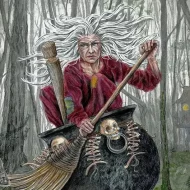
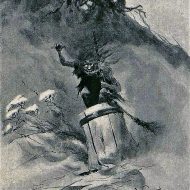
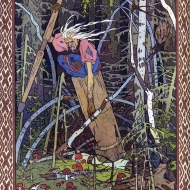
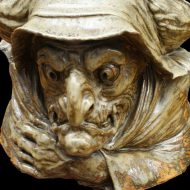
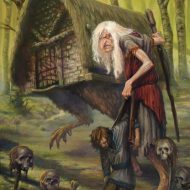

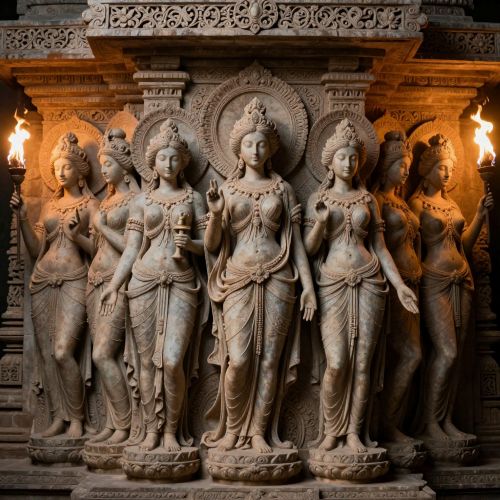
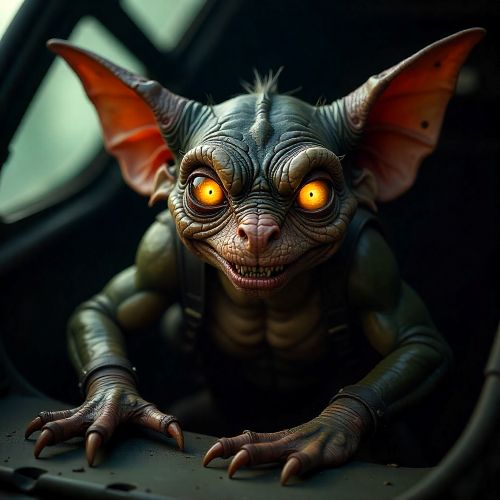
Pingback: Baba Yaga: Exploring Russian Folklore Mystique